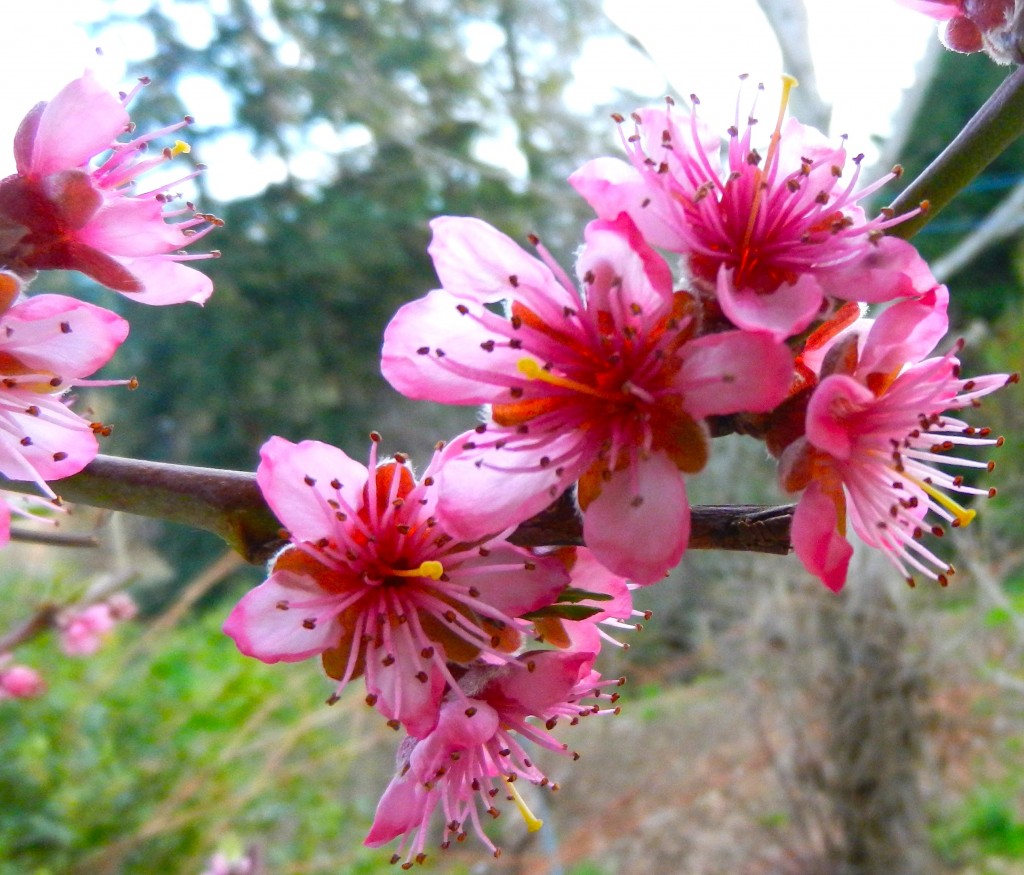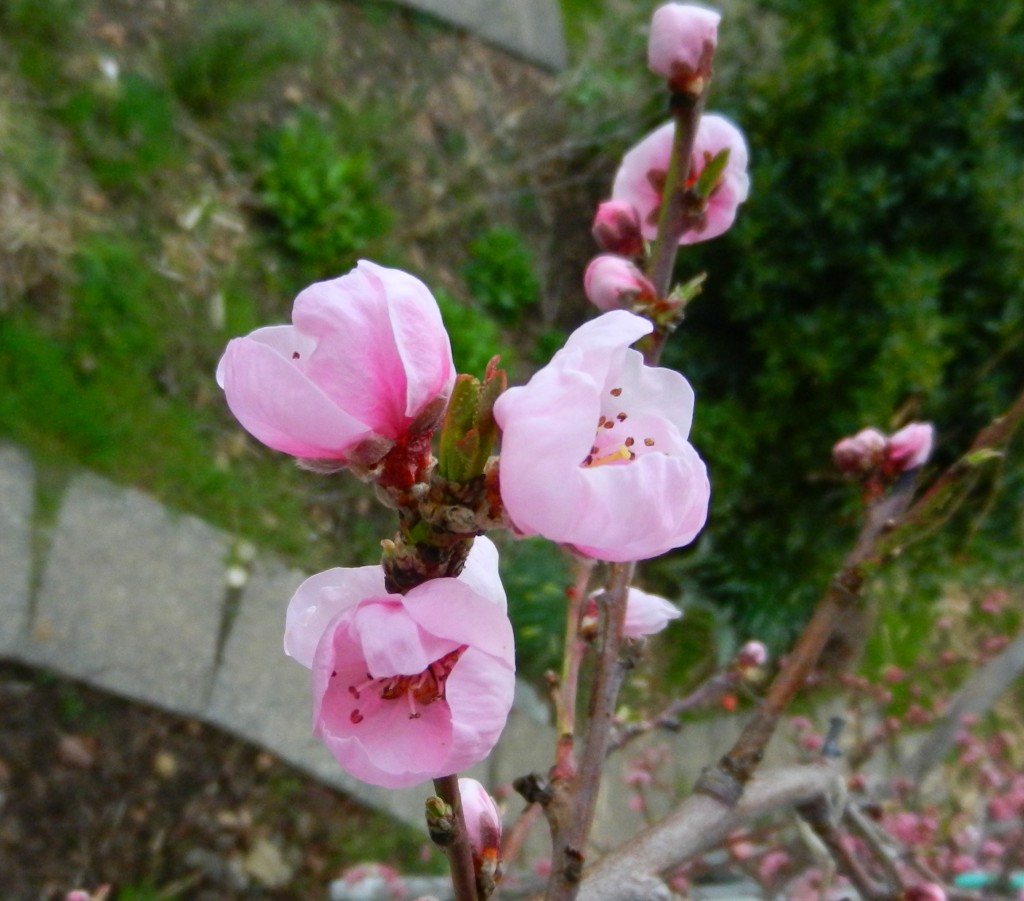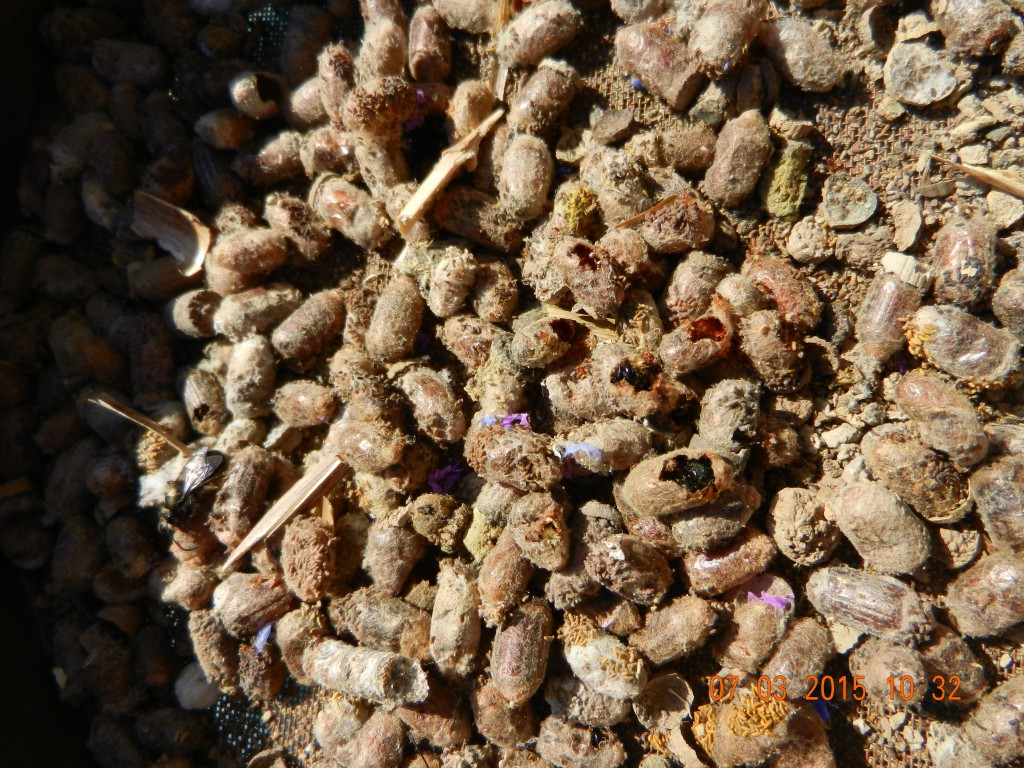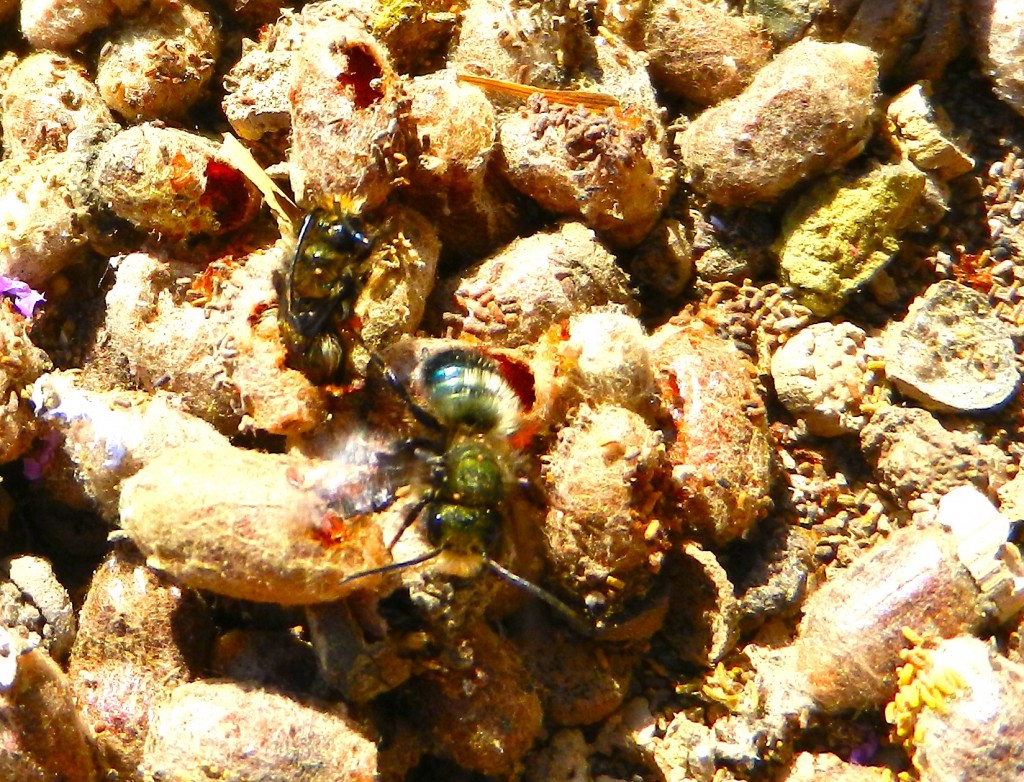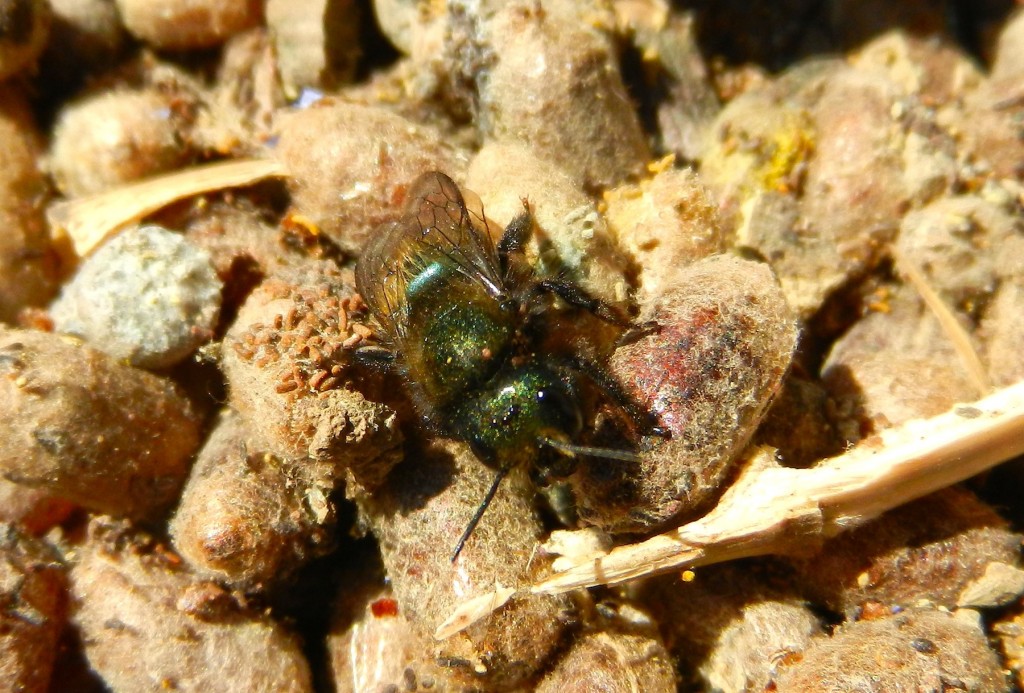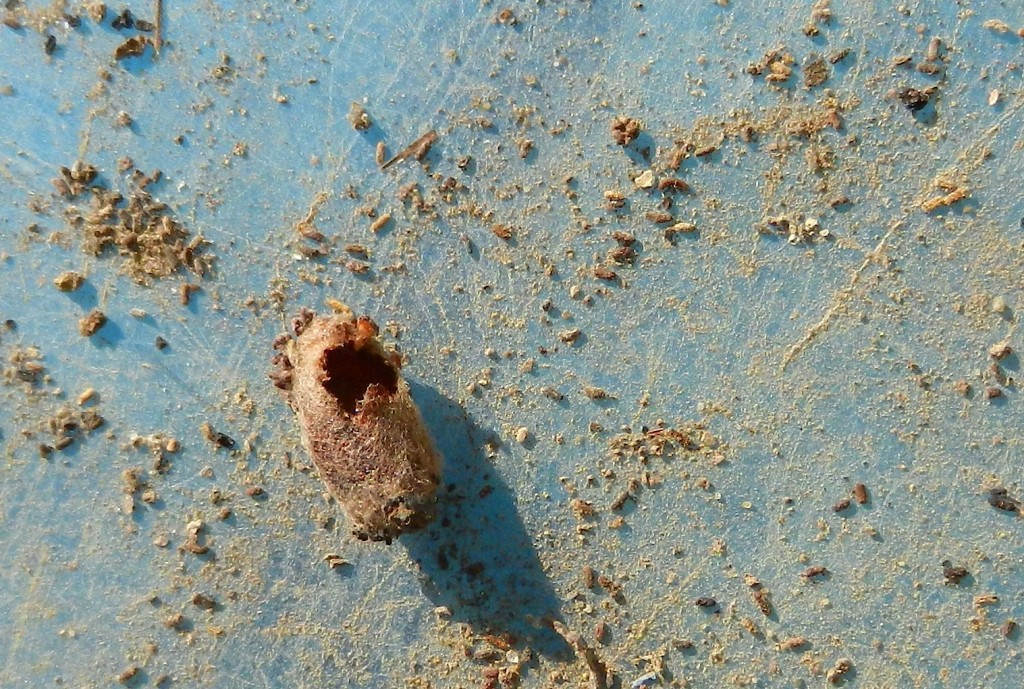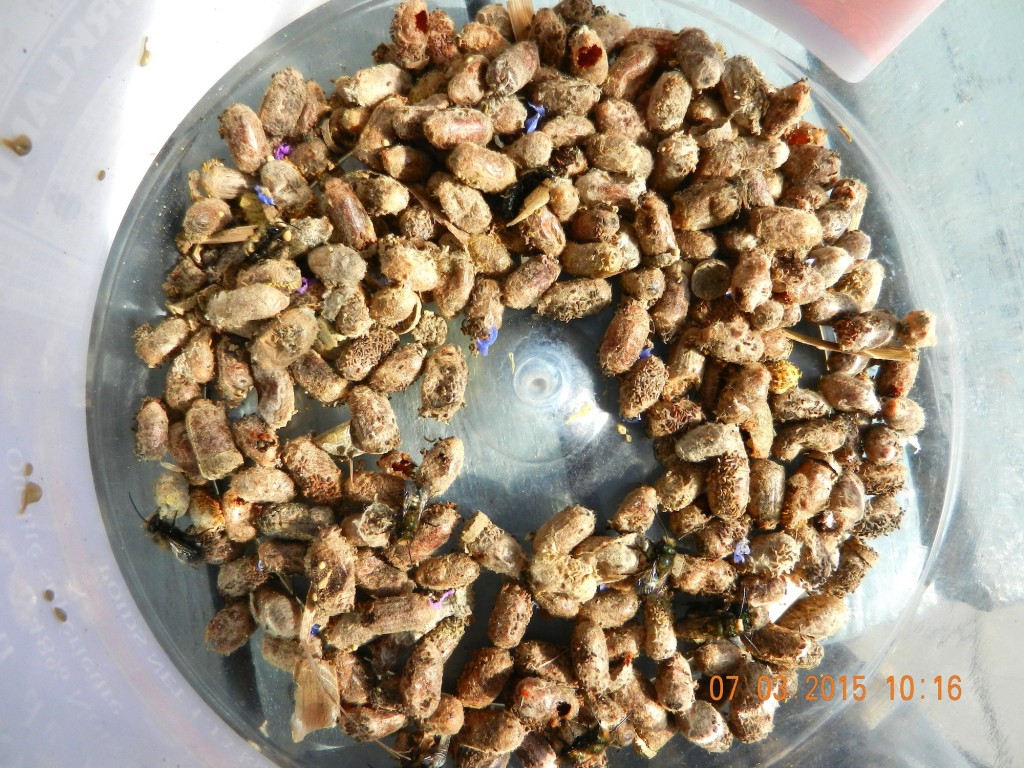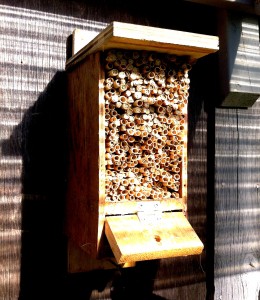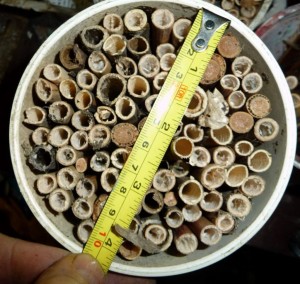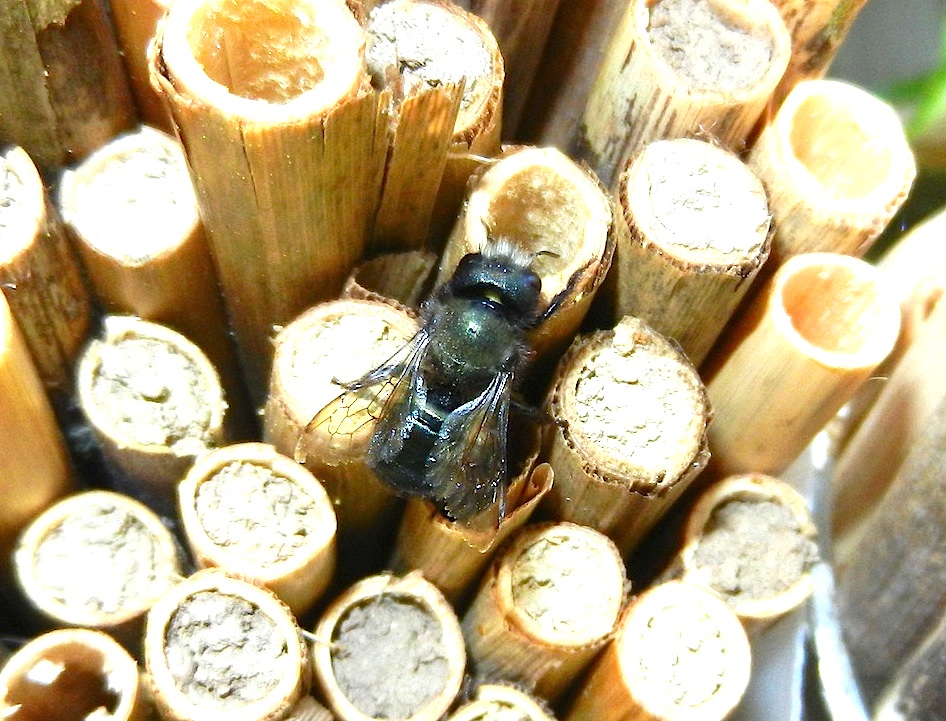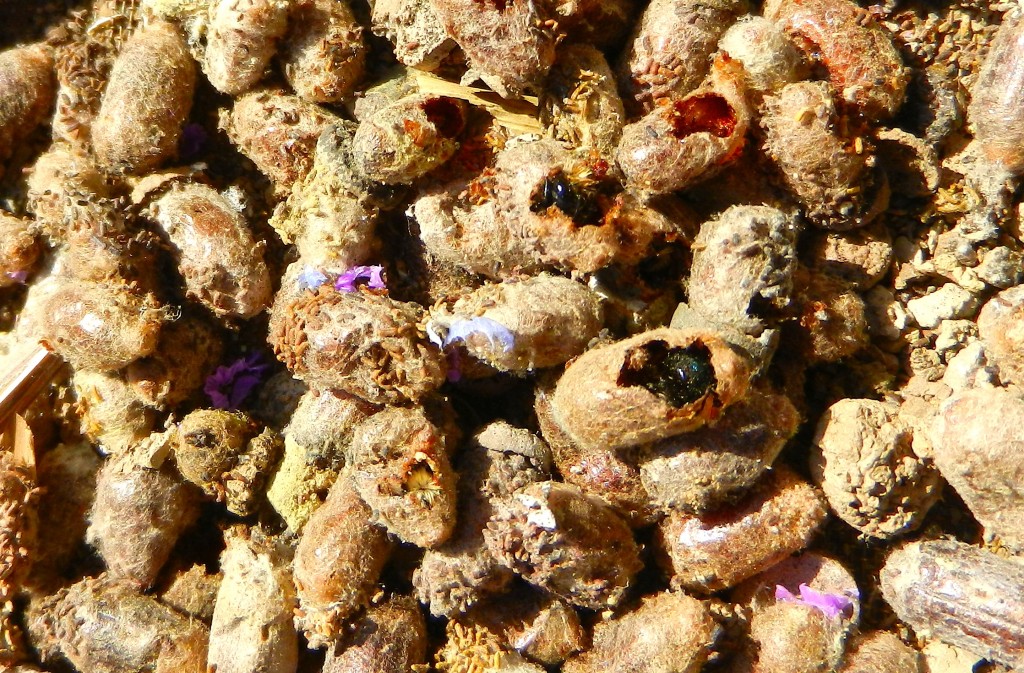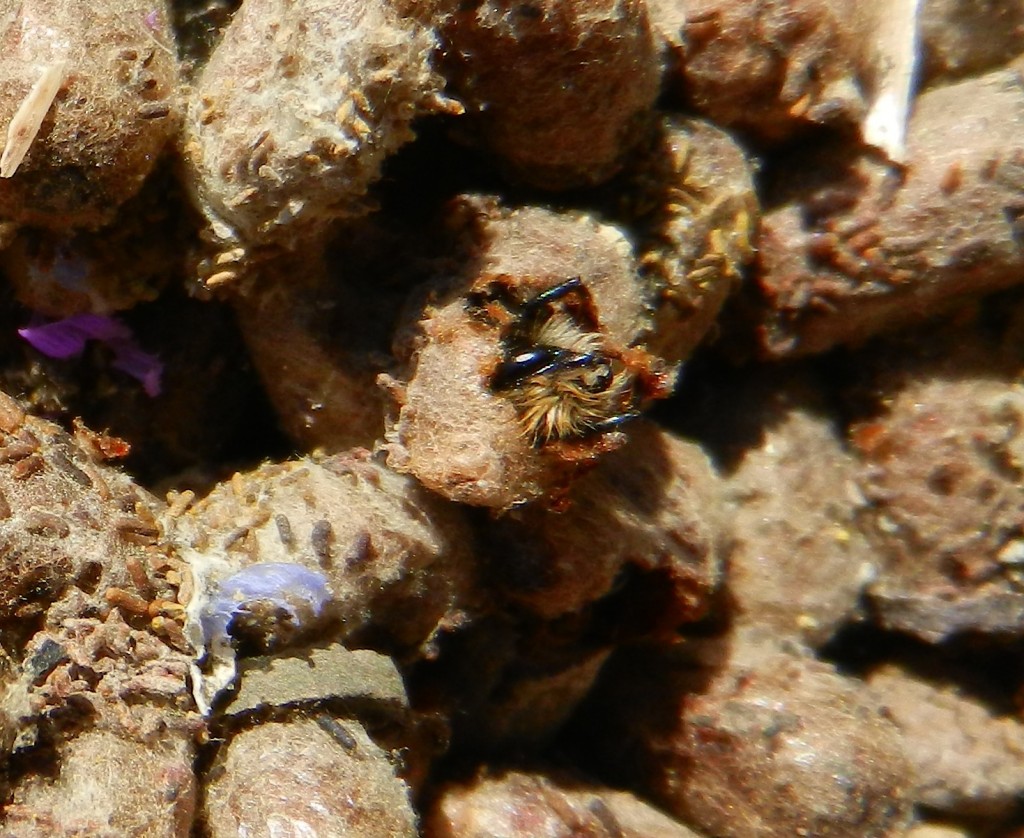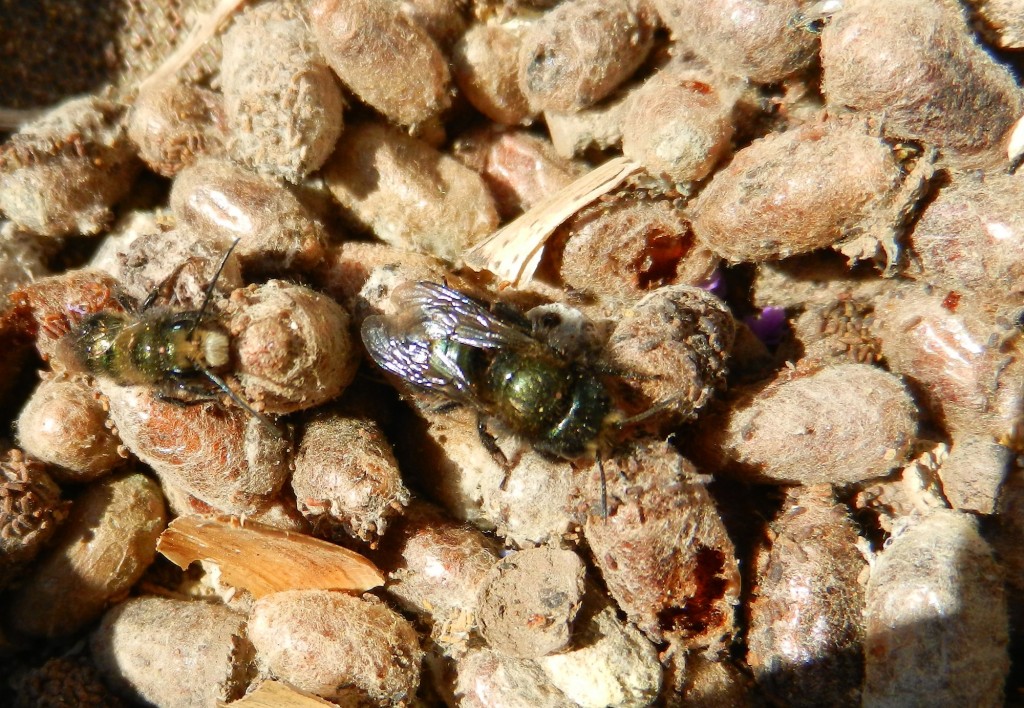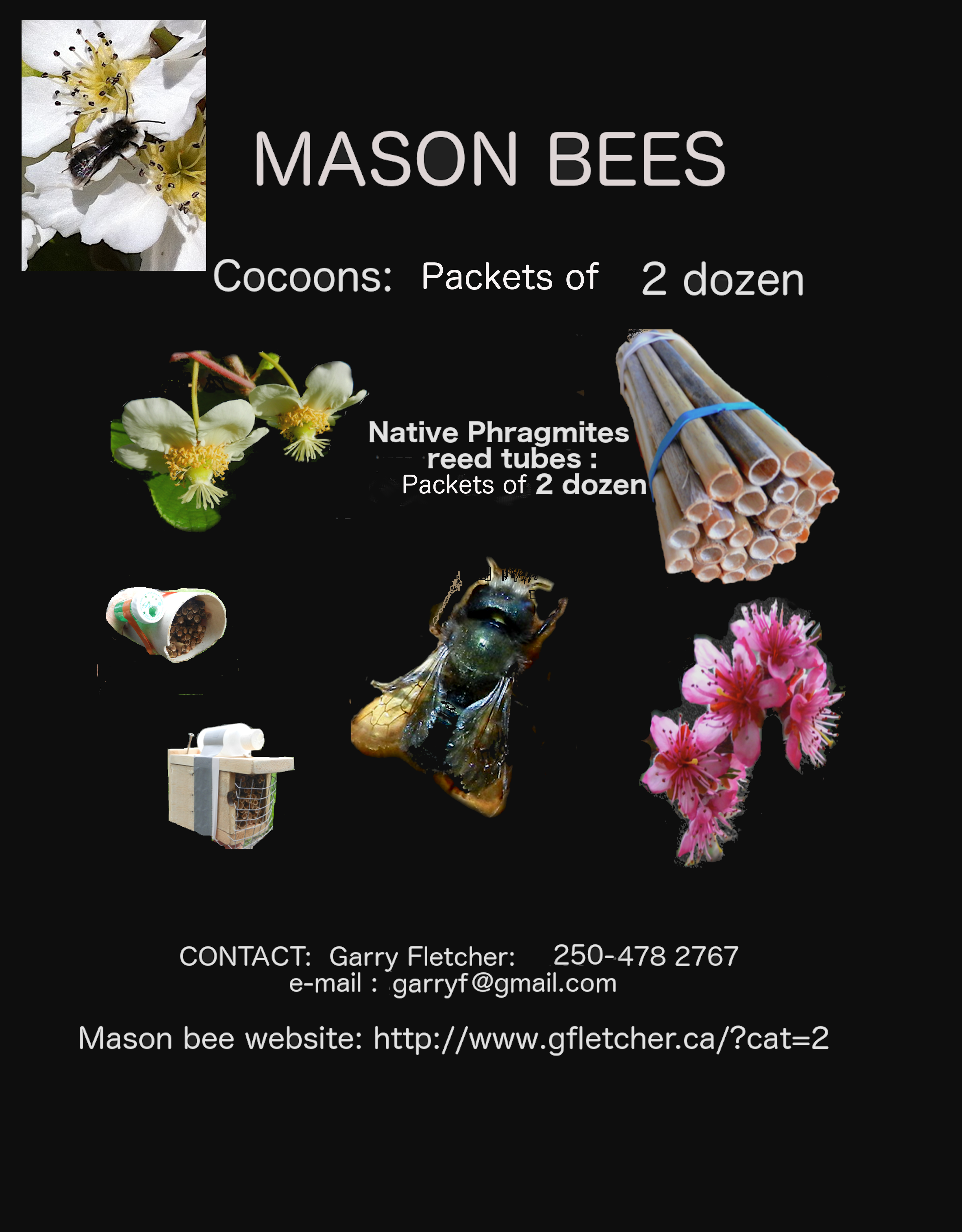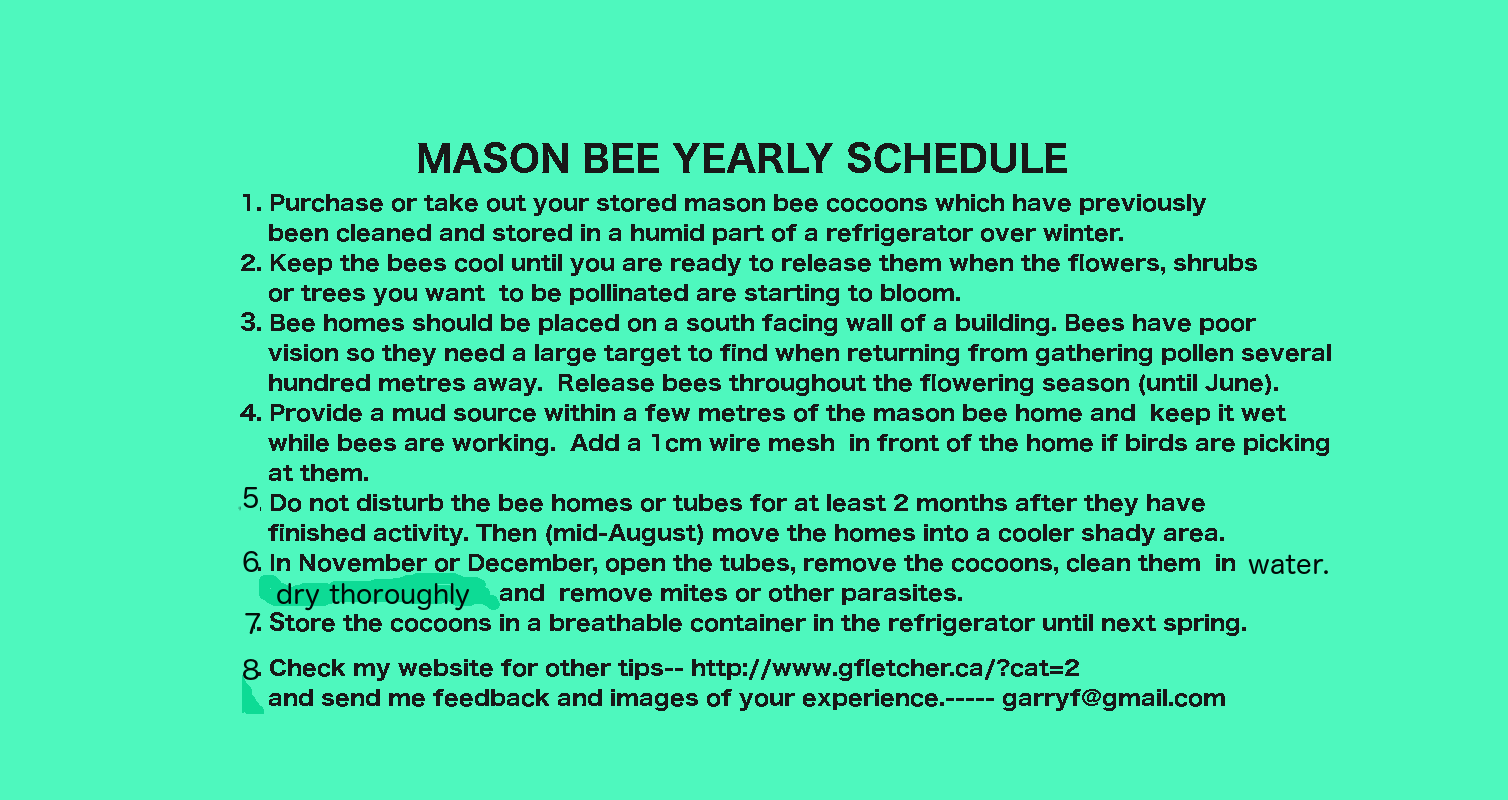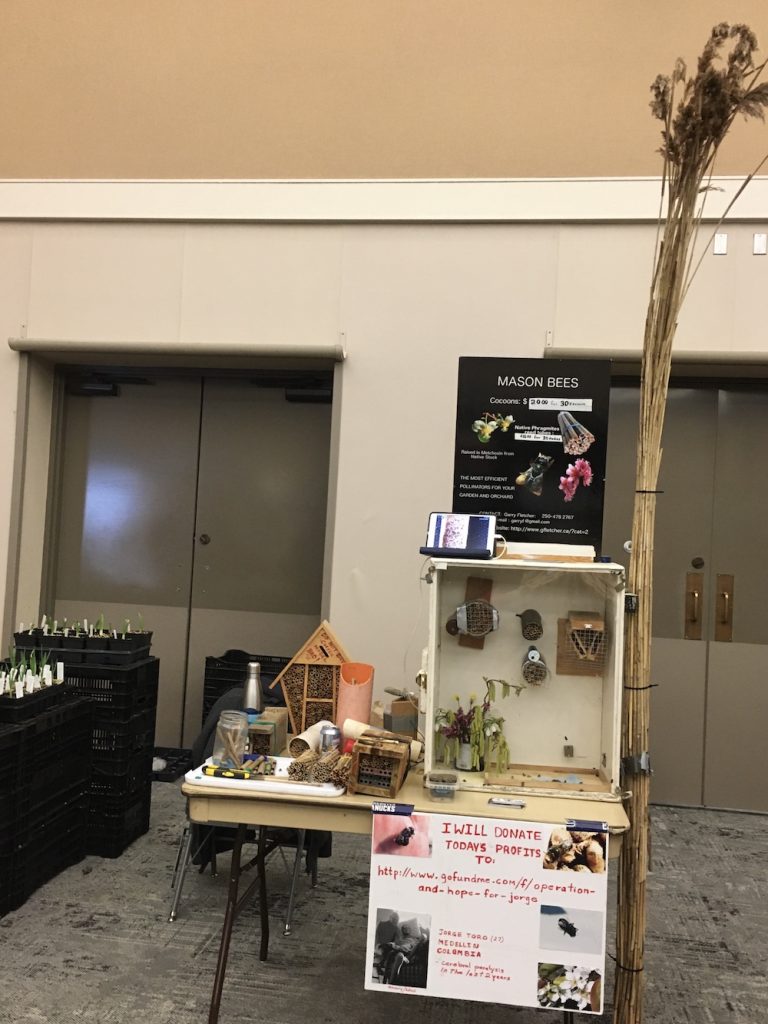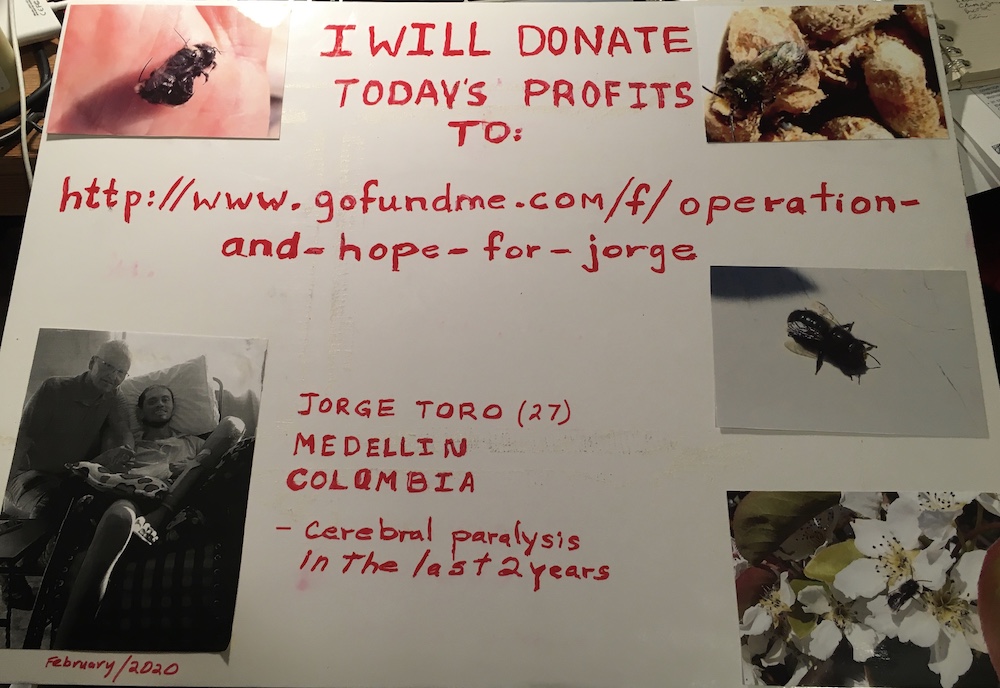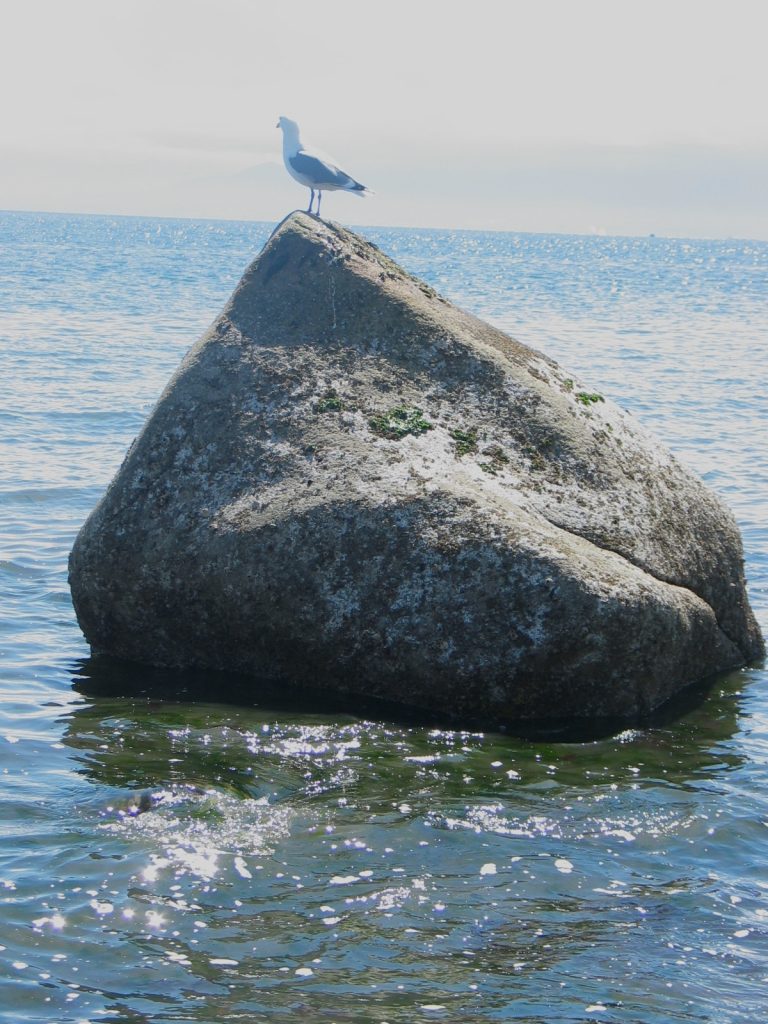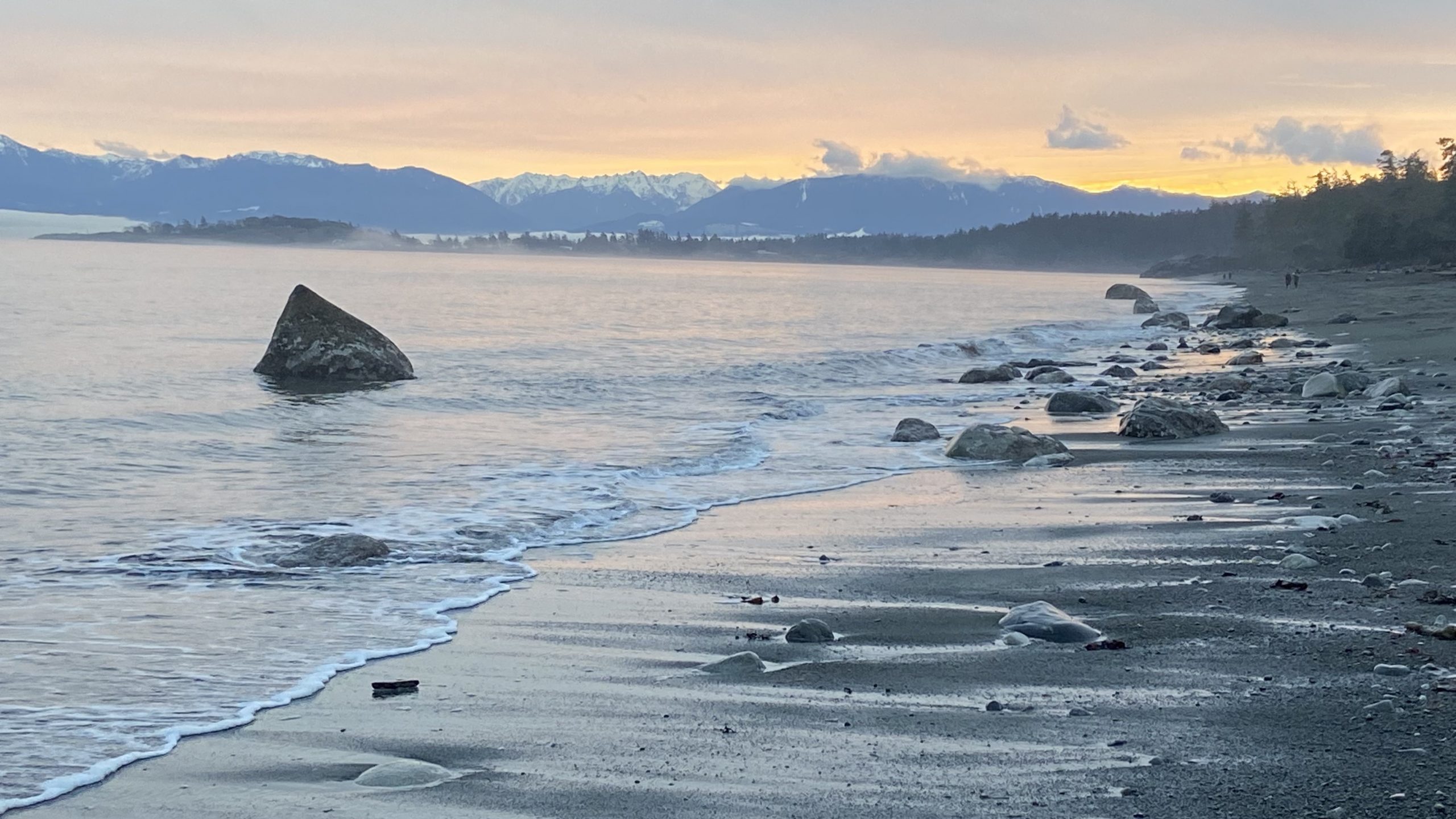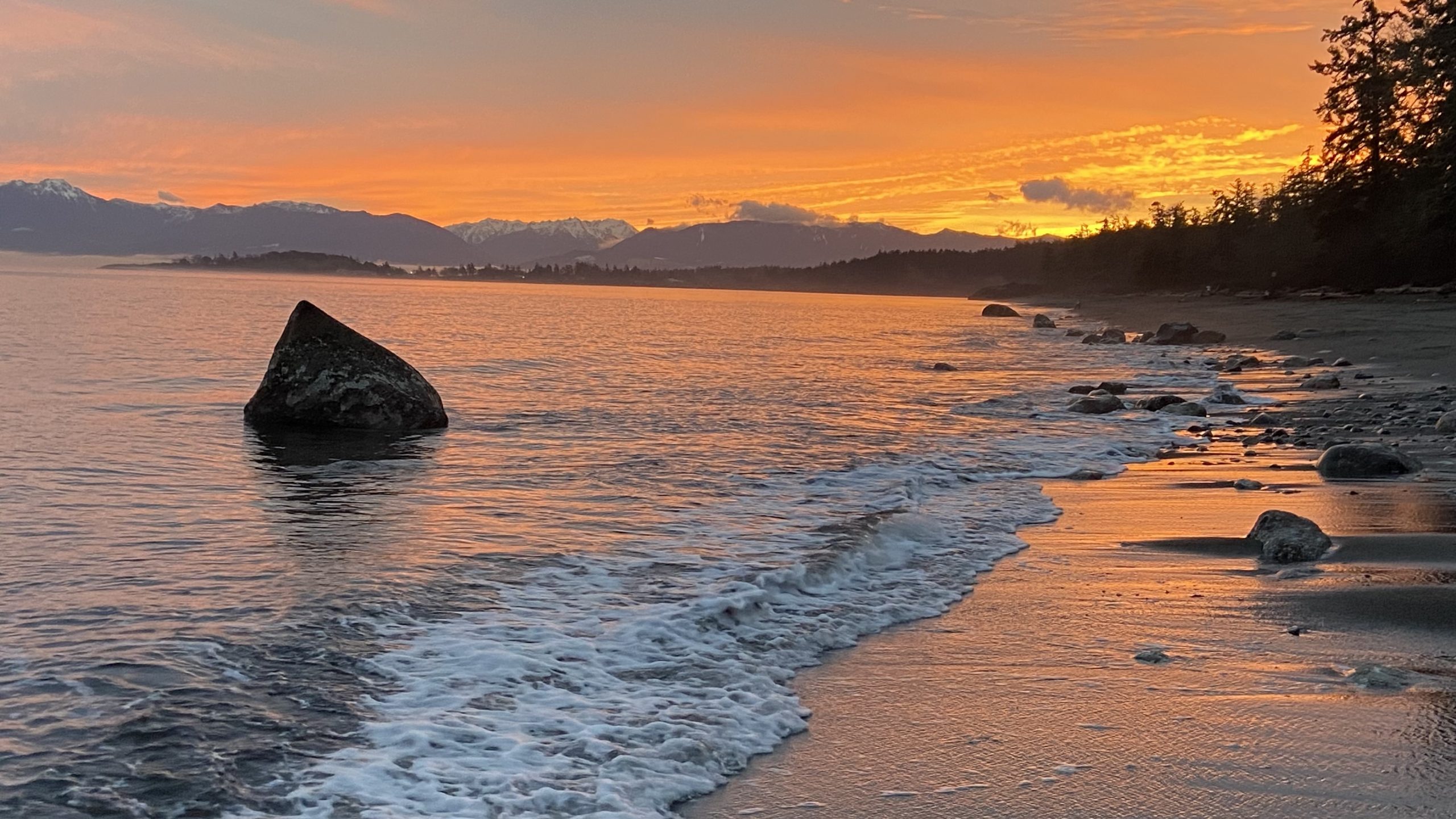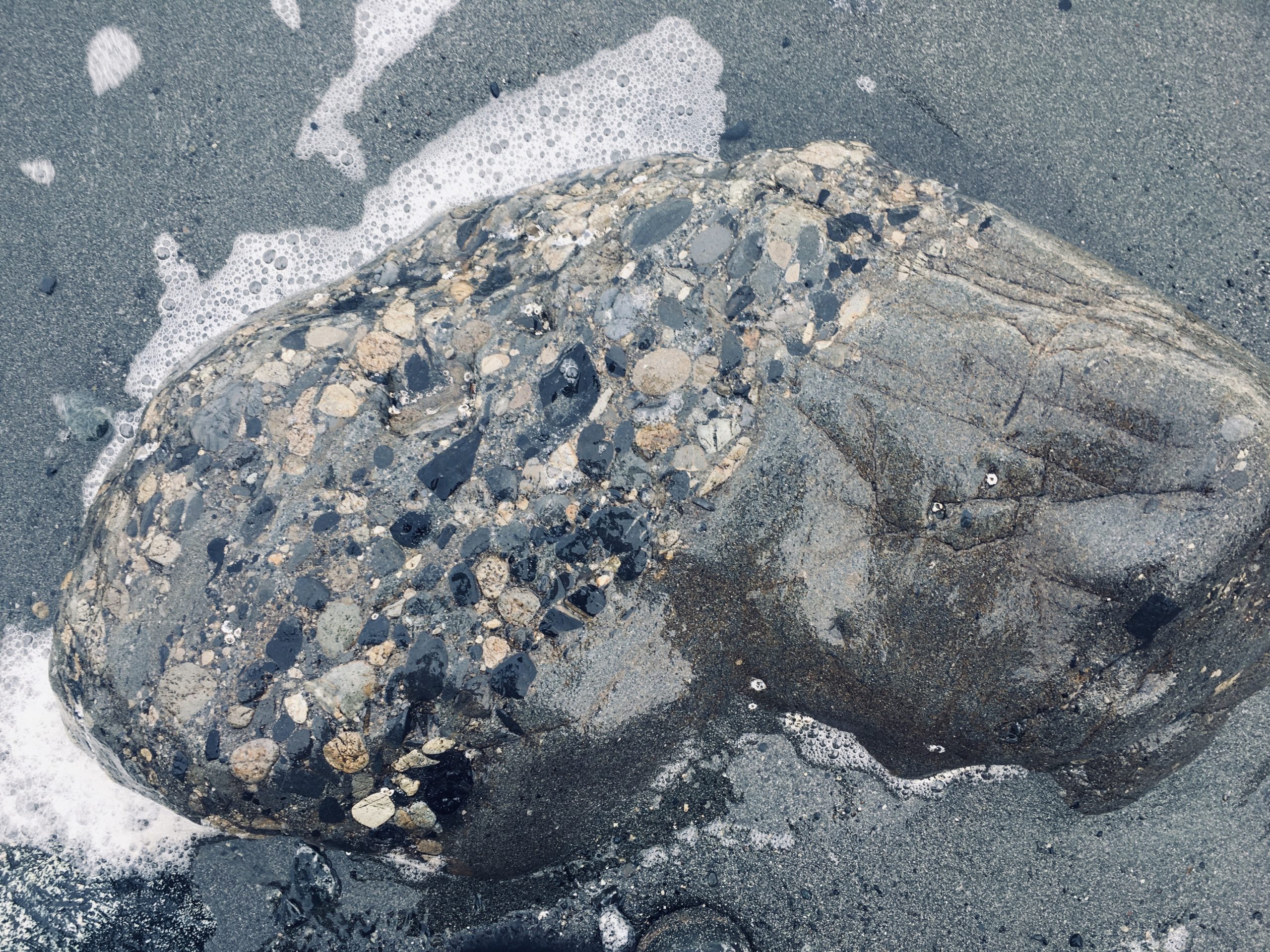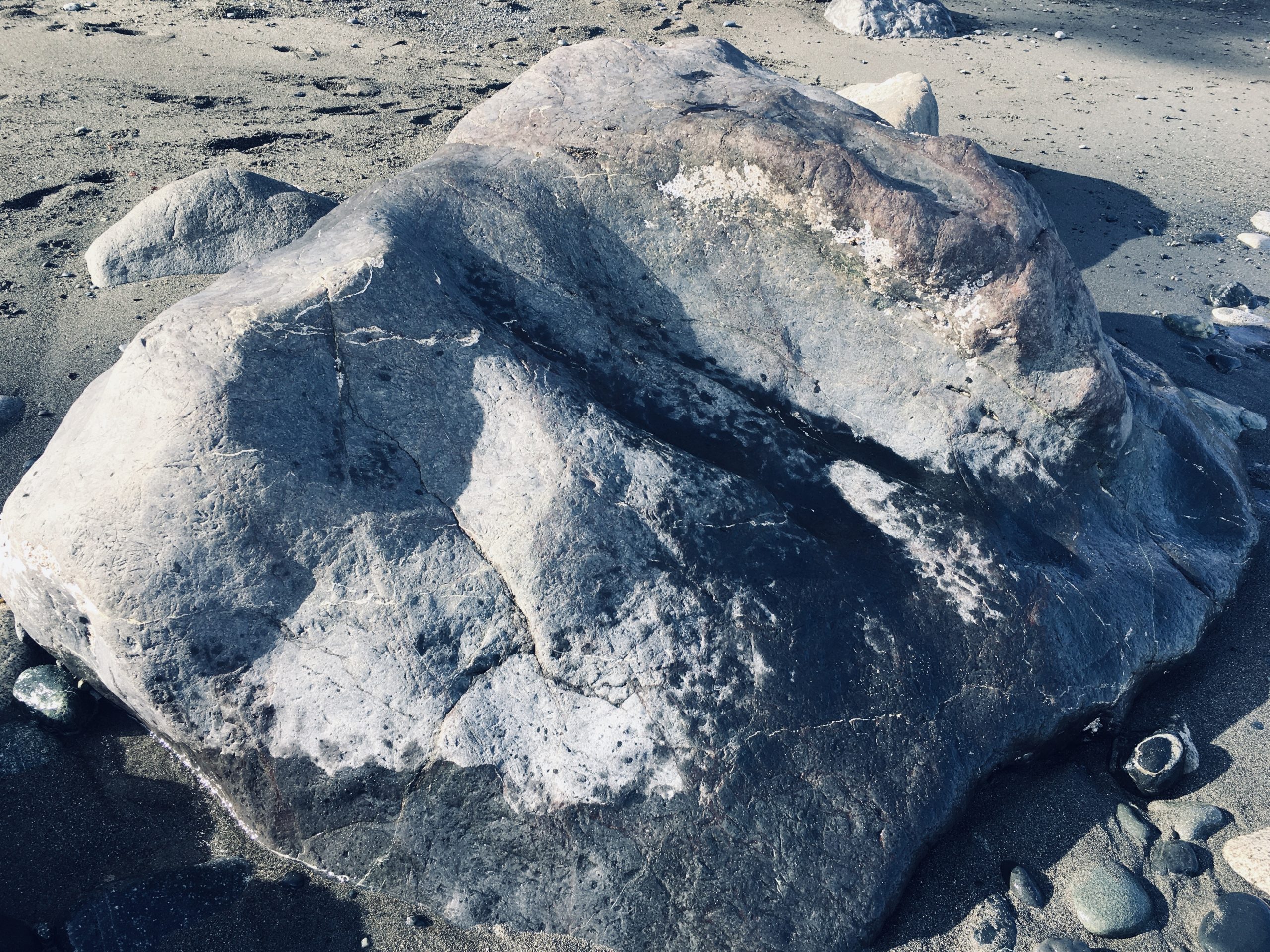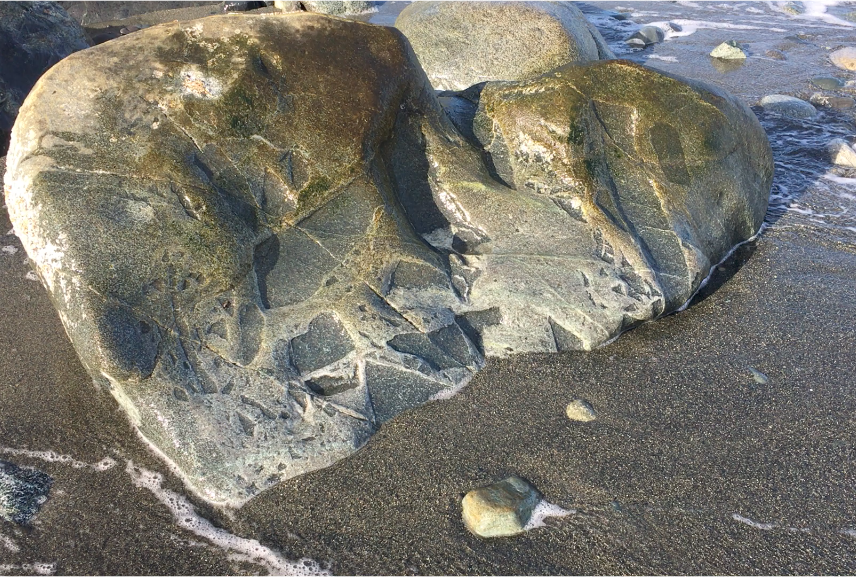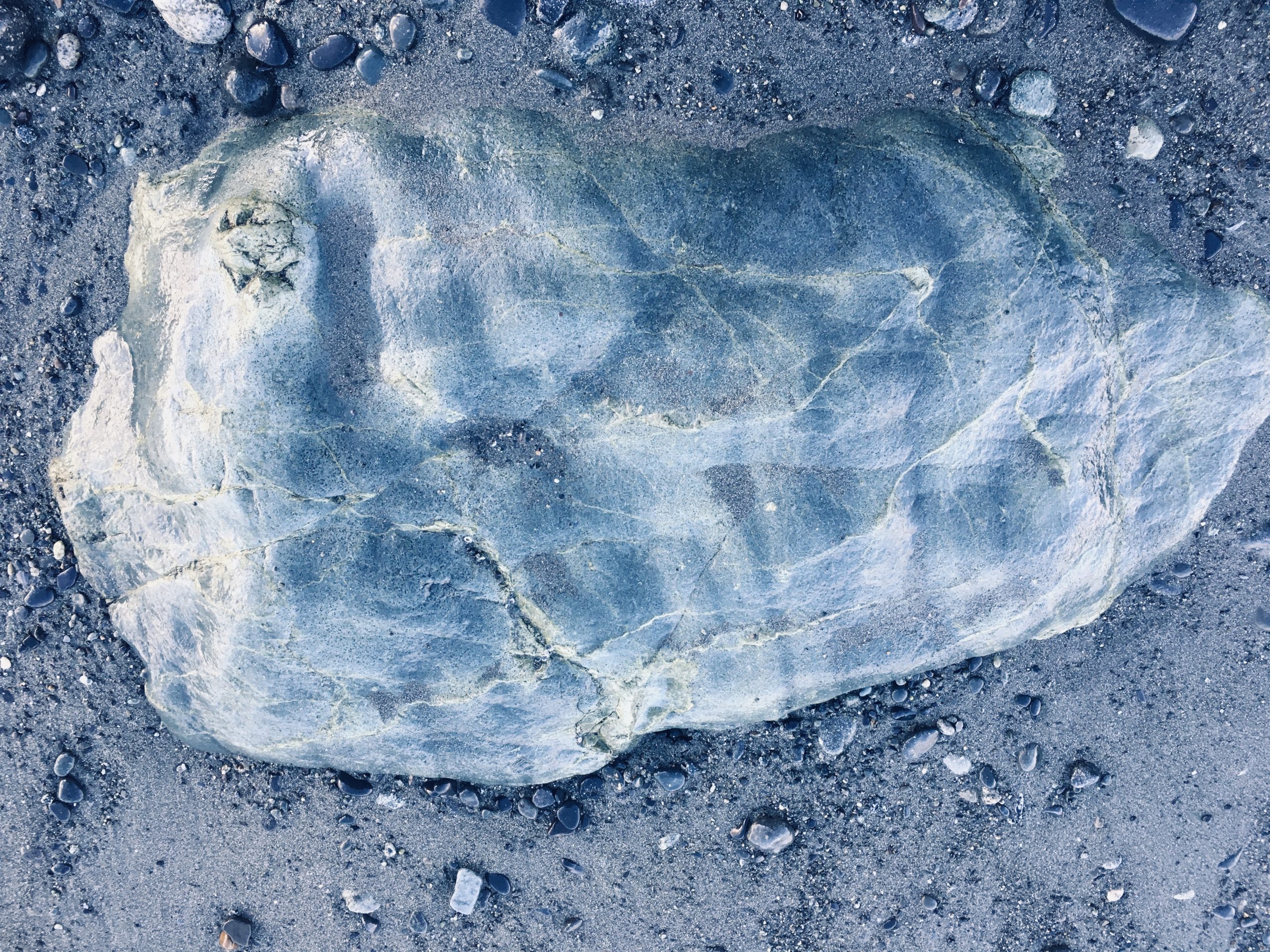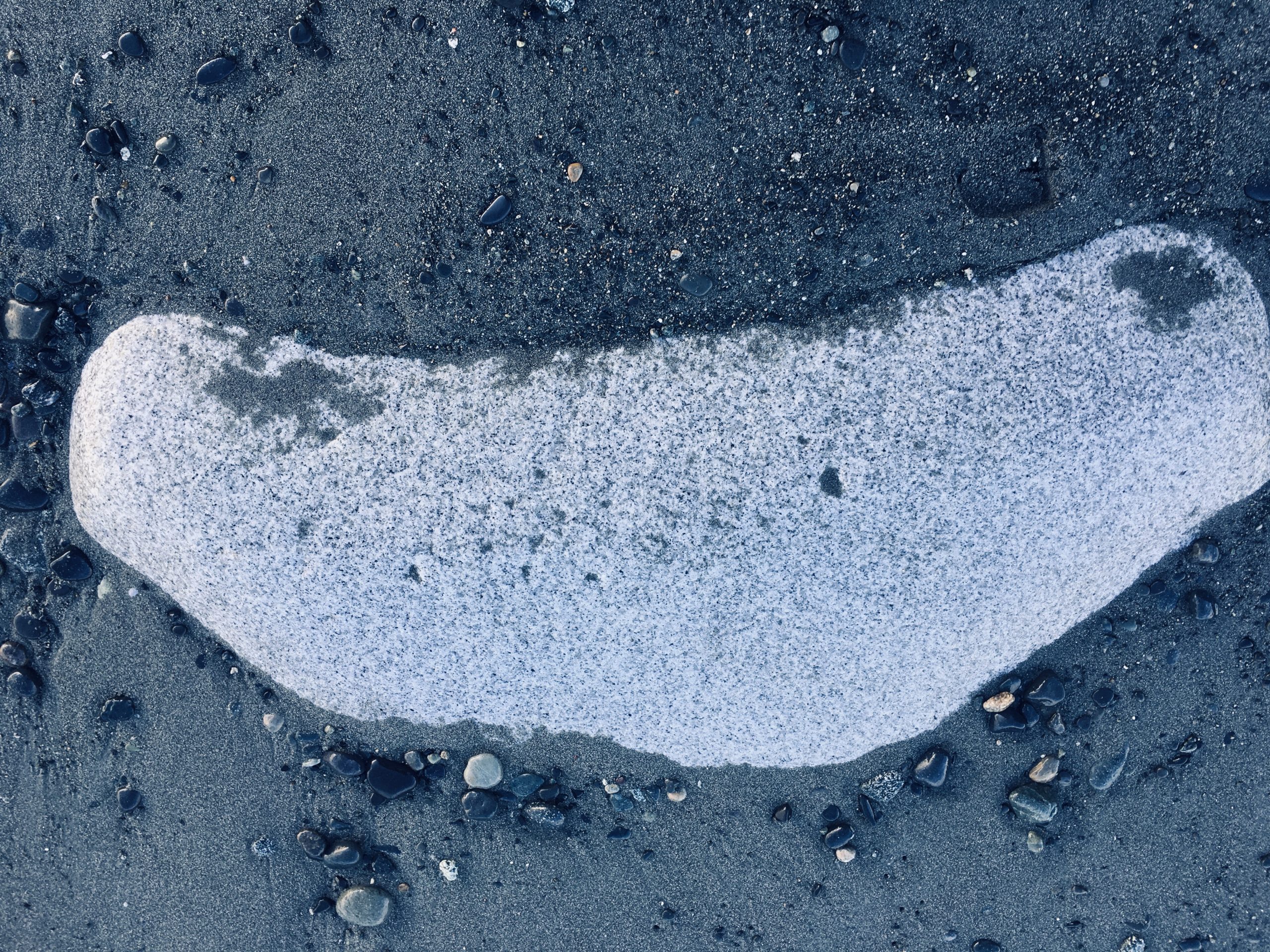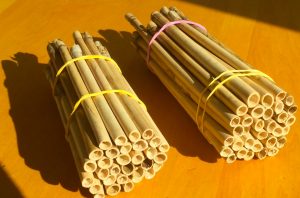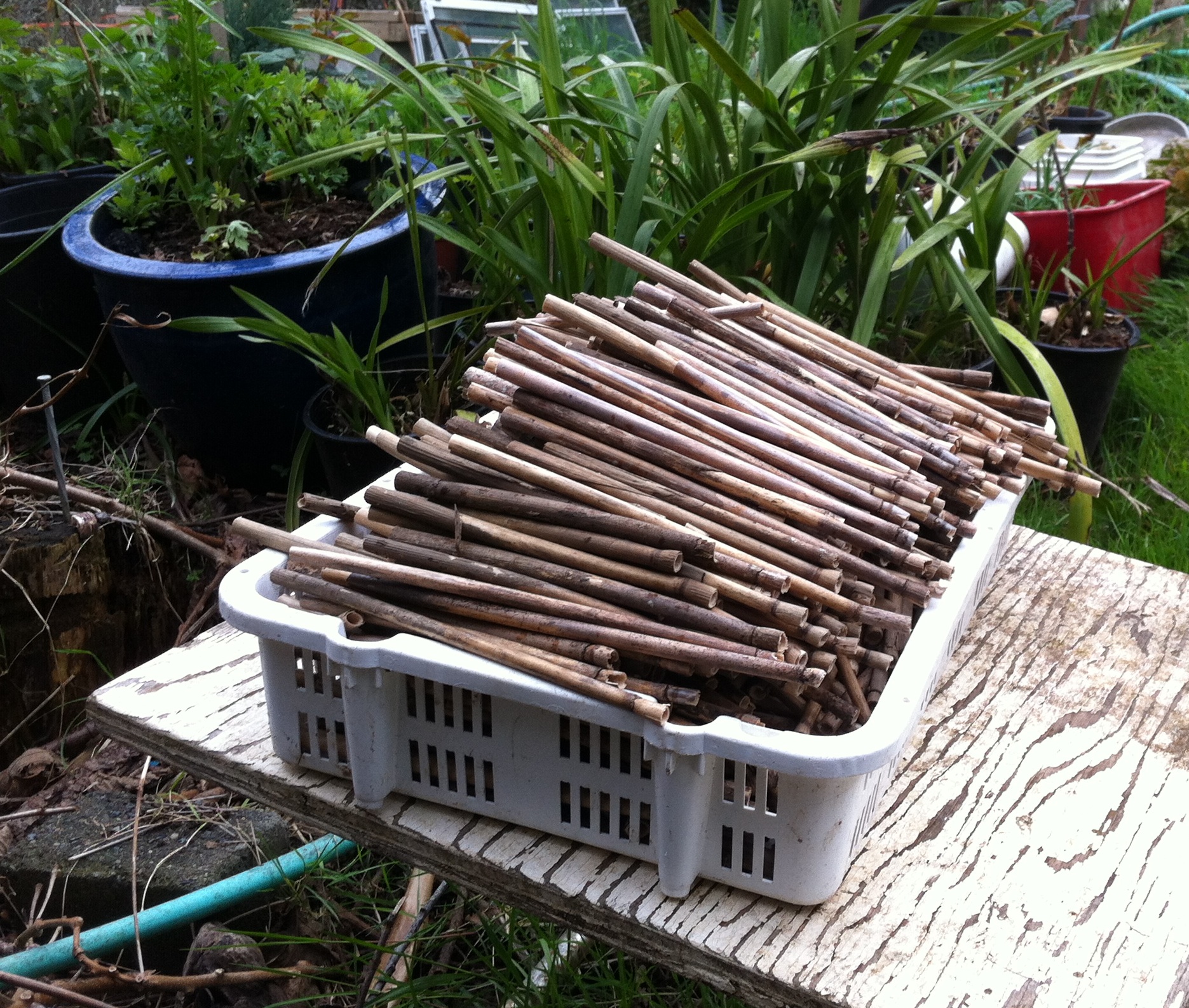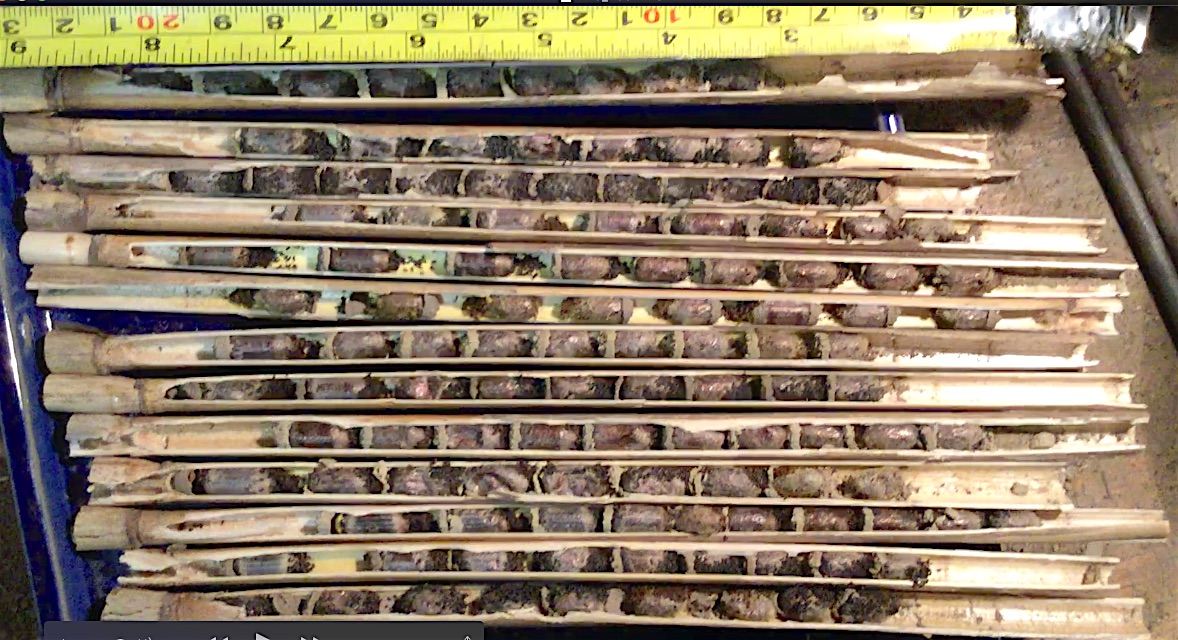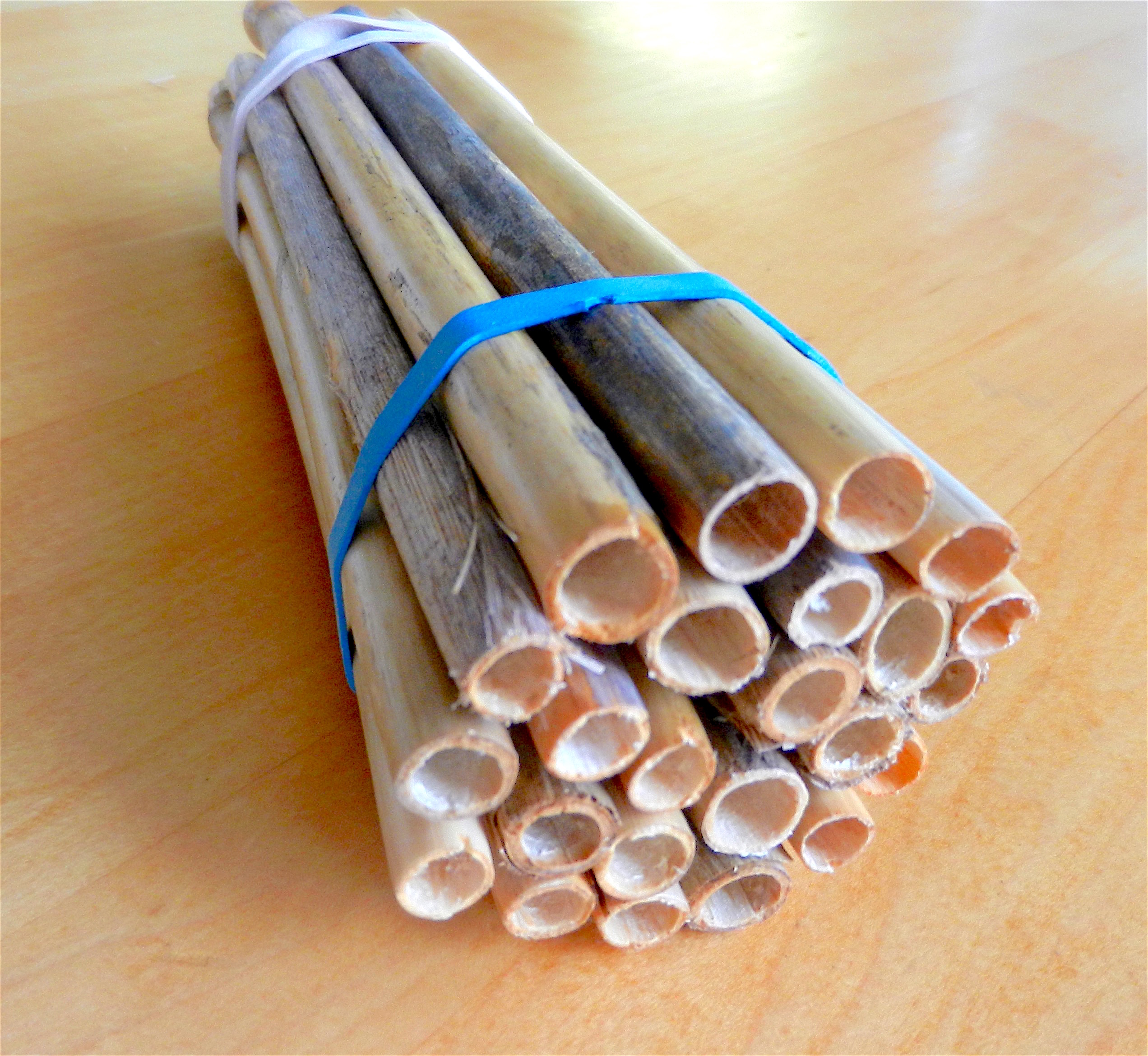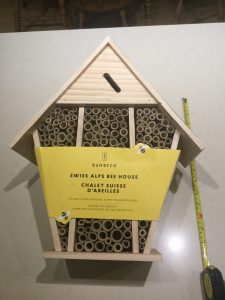 Recently this Mason Bee house has appeared on the market and it has to be one of the worst pieces of equipment I have seen for encouraging mason bees. I have recently sent a request to Costco management requesting that this item be removed from their shelves.
Recently this Mason Bee house has appeared on the market and it has to be one of the worst pieces of equipment I have seen for encouraging mason bees. I have recently sent a request to Costco management requesting that this item be removed from their shelves.
The following are the reasons that I have made this criticism:
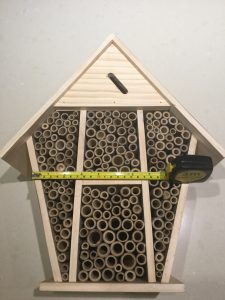 1. The tubes are made of bamboo and are impossible to break open to remove cocoons for cleaning to prevent parasitic mite infection. The manufacturer even gives directions to put them back outside in the spring without cleaning out the parasitic mites. This is totally irresponsible as it will lead to an increase in mite population since you are creating a monoculture which encourages parasites.
1. The tubes are made of bamboo and are impossible to break open to remove cocoons for cleaning to prevent parasitic mite infection. The manufacturer even gives directions to put them back outside in the spring without cleaning out the parasitic mites. This is totally irresponsible as it will lead to an increase in mite population since you are creating a monoculture which encourages parasites.
2. The maximum depth of the tubes is less than 4 inches. Mason bees need at least a 6 inch depth. Also some of them are open ended allowing parastic wasps in the back end as well.
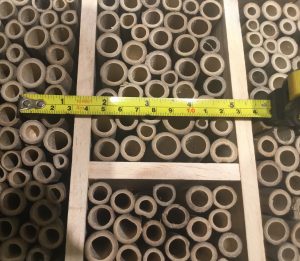 3.The diameter of many of the tubes is away too large. The ideal size for mason bees is 5/16 inch.
3.The diameter of many of the tubes is away too large. The ideal size for mason bees is 5/16 inch.
4. The diameter of many of the tubes was too small for mason bees.
5. Some of the tubes were glued in upside down with nodes at the front end preventing bees from entering.
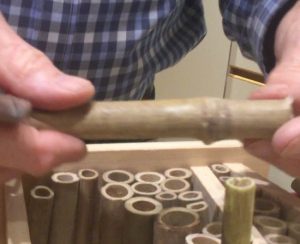 6. Many of the tubes had nodes near the centre, rather than at the bottom end, meaning they were less than 2 cm deep and no sane mason bee would use those tubes.
6. Many of the tubes had nodes near the centre, rather than at the bottom end, meaning they were less than 2 cm deep and no sane mason bee would use those tubes.
The partial solution if you end up buying one of these things if you can’t return it, is to remove all the tubes as in the video below, and fill them or replace them with disposable phragmites or cardboard tubes.
See an update on how to modify these tubes if you happen to be stuck with having bought a house like this.
